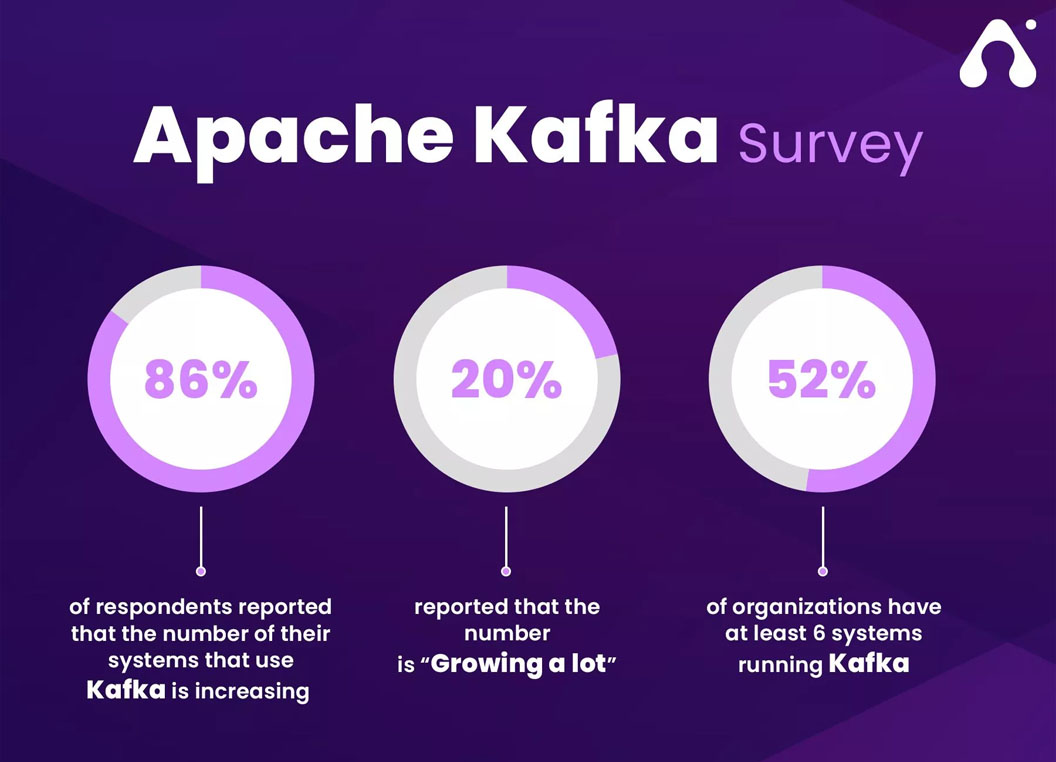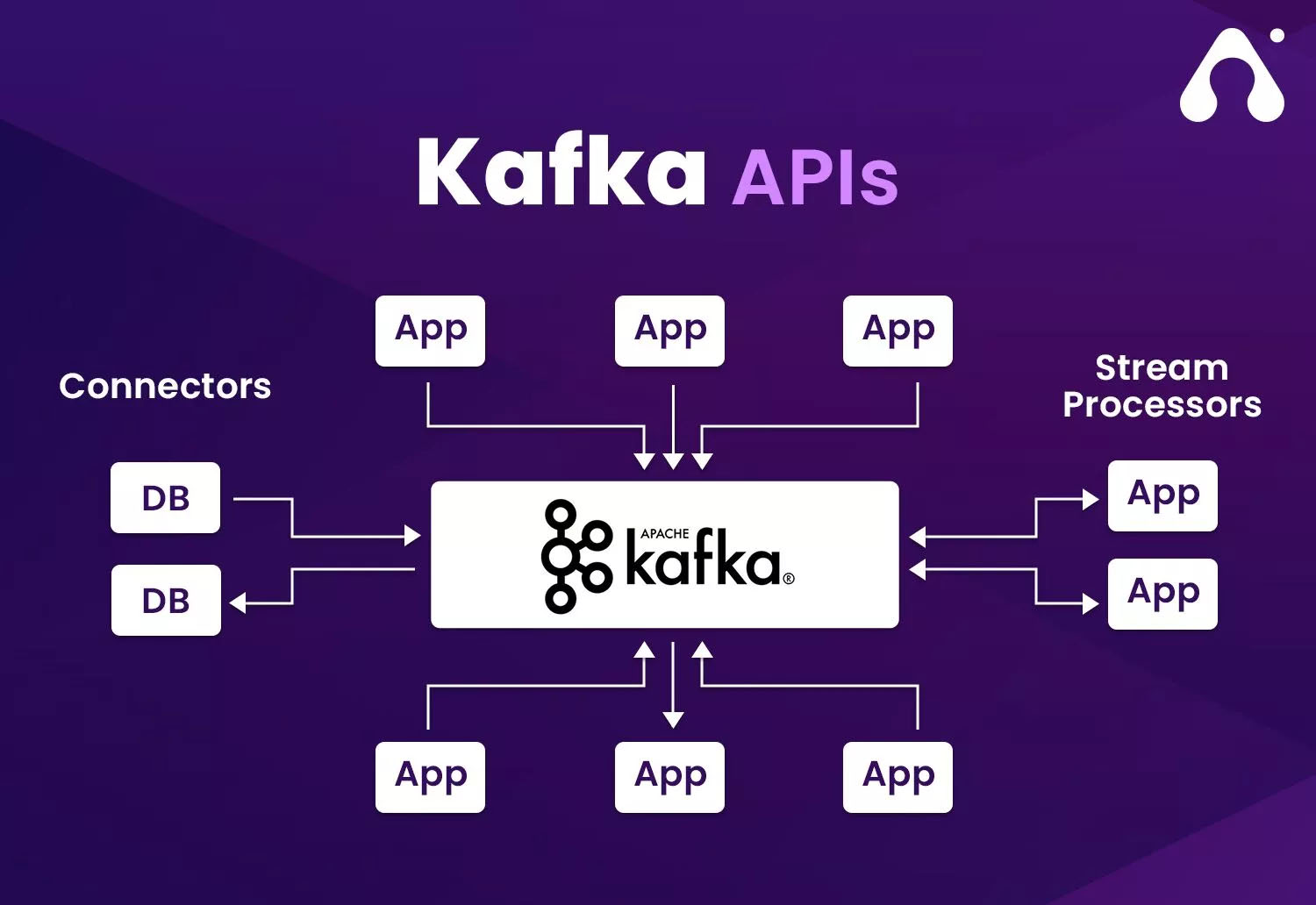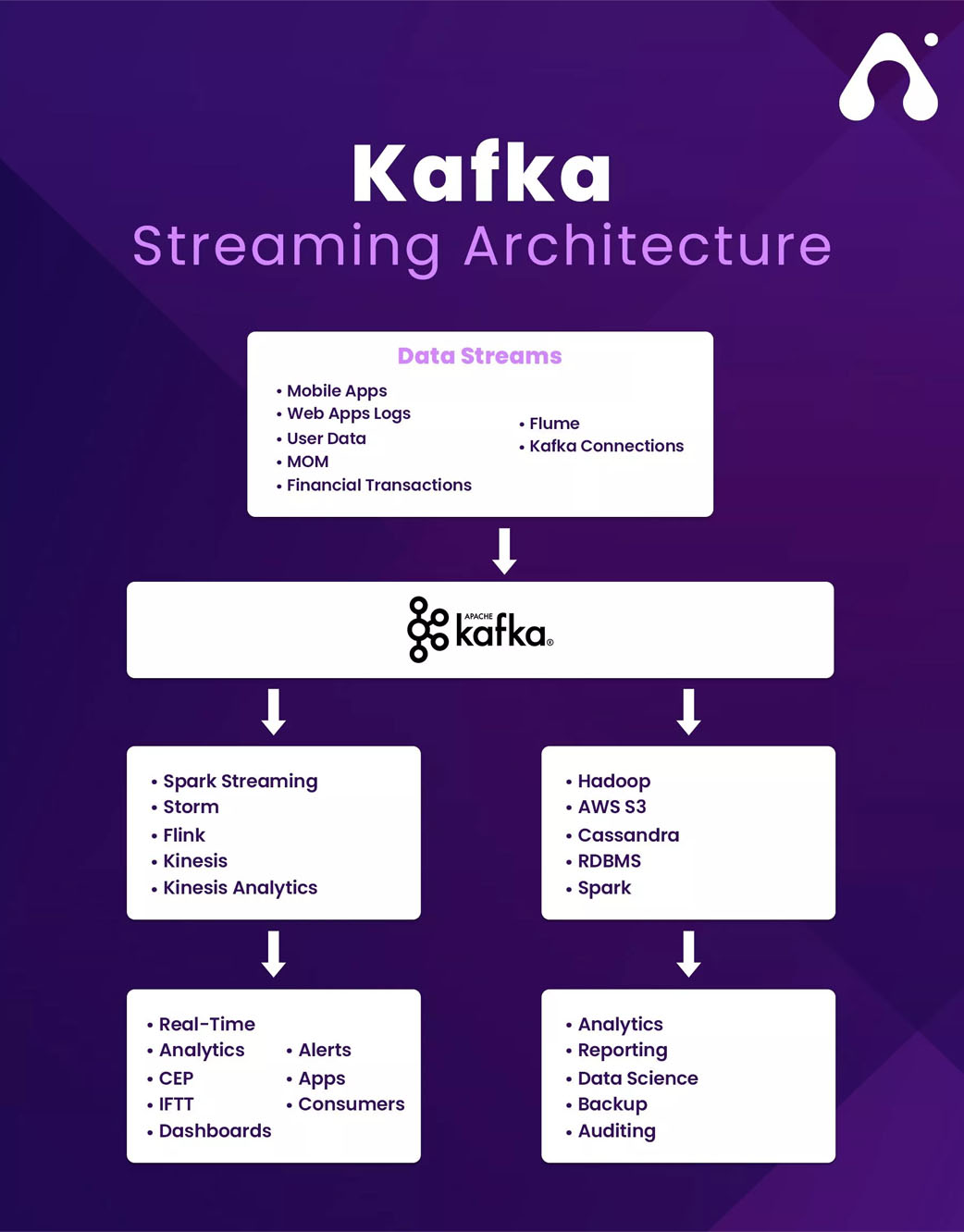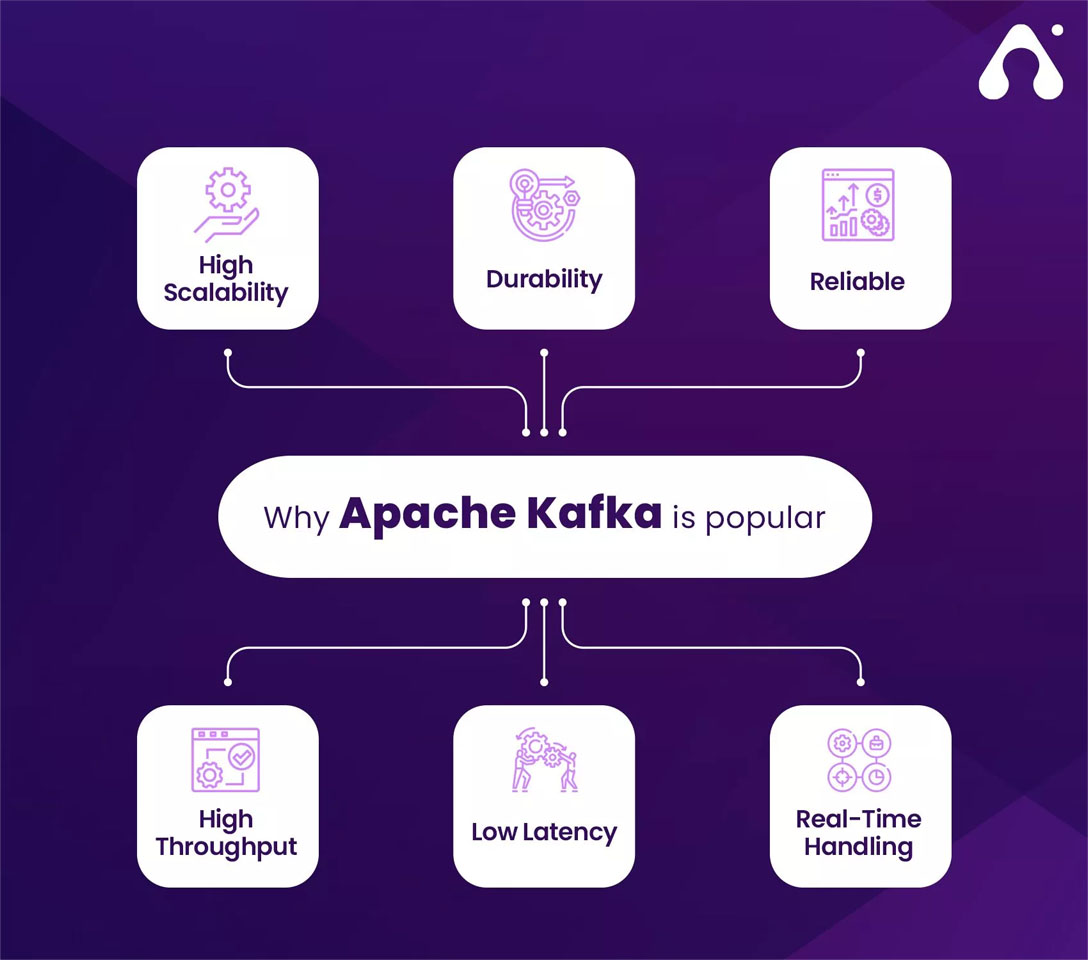Everyone hates waiting in a queue. However, when you move your data around a cloud environment, message queues are your best partner. That’s where Apache Kafka comes in! The popularity and growth of Apache Kafka are at an all-time high. Even its popularity is evident from the fact that over 500 fortune companies use Apache […]
Updated 15 February 2024

CEO at Appventurez
Everyone hates waiting in a queue. However, when you move your data around a cloud environment, message queues are your best partner. That’s where Apache Kafka comes in!
The popularity and growth of Apache Kafka are at an all-time high. Even its popularity is evident from the fact that over 500 fortune companies use Apache Kafka development. Apache Kafka allows businesses to create message queues for large volumes of data. Kafka is used for real-time streams of data to gather extensive data or to do real-time analysis. Kafka is used within memory microservices to offer durability and can be used to feed events to CEP (complex event streaming systems) and IoT/IFTTT-style automation systems.
You can also read about digital transformation Netflix for video streaming apps.
Now you must be thinking about Apache Kafka’s popularity. Many people are unaware of this software platform. But don’t worry! You are at the right place as in this blog; we will discuss every aspect of Apache Kafka, including its working, benefits, use cases, structure and many more.
Let’s first start with Apache Kafka’s introduction.
Apache Kafka is an open-source streaming platform. It was earlier built as a messaging queue at LinkedIn; however, this platform has emerged to be more than just a messaging queue in recent years. It has become a vital tool for data streams, and even it has many different applications such as LinkedIn, Twitter, Netflix and many more. Kafka manages a high amount of data per unit of time. It also allows the processing of data in a real-time mode thanks to its low latency. This platform is written in Java and Scala as well as it is compatible with different programming languages. Kafka uses a binary TCP-based protocol that depends on a “message set” abstraction. It collects the message together to reduce the overhead of network round trips. It results in sizable sequential desk operations, extensive network and adjacent memory blocks that enable Kafka to convert a random message’s stream into linear writes.
Similar to RabbitMq, Apache Kafka enables apps developed on different platforms to communicate through asynchronous message passing. However, it is different from these traditional messaging systems in various ways:
These are some significant factors that differentiate Apache Kafka from other traditional messaging systems. Here is the Kafka survey is shown in a diagram:

Apache Kafka architecture has four core APIs such as producer, consumer, streams and connector. Shown in the figure:

Let’s talk about them in detail.
The Producer API allows an app to publish a stream of records to one or more topics.
This API allows an app to subscribe to one or more Kafka topics. It also permits an app to process the stream of records produced for them.
It receives an input stream from one or more topics and produces an output stream to act as a stream processor. This API effectively transforms the input stream to output as it allows an app.
Develop or operate reusable producers or consumers that connect Kafka topics to existing apps or data systems; developers use the connector API.
Read more about: A comprehensive guide to API development
Kafka clusters usually include different brokers to maintain load balance. As these are stateless, they use ZooKeeper to maintain the cluster state. Kafka brokers can handle hundreds of thousands of reads and write per second. At the same time, each broker can handle TB of messages without impacting performance. Apart from this, you can make sure Kafka ZooKeeper development performs broker leader elections.
Kafka Broker uses ZooKeeper for managing and coordination. It also notifies the producer and consumer about any new broker in the Kafka system or failed broker. When this component sends the notification regarding the presence or failure of the broker, the producer and consumer take the decision and start coordinating their tasks with other brokers.
Producers in Kafka send data to brokers, and they search messages and automatically send it to the new broker, exactly when the new broker starts. Always remember that the Kafka producer sends messages fast so that brokers can handle them easily. And even it doesn’t require any acknowledgment from the broker.
With partition offset, the Kafka Consumer maintains the data of consumed messages as brokers are stateless. Besides, you can assure that the consumer has received all previous messages after accepting a specific message offset. After that, you need to supply an offset value so that consumers can skip to any point in a partition. Furthermore, ZooKeeper notifies consumers of the offset value.
If you want to build a strong foundation of Kafka knowledge, you need to know about terminologies. Here are some Kafka terminologies such as:
You can also read about mobile app architecture best practices:
You must know how streaming apps work to understand the working of Kafka. For understanding various concepts and terminologies such as:
One of the first things which everyone should understand for the working of streaming applications is Event – An atomic piece of data. For example, when the user registers into the system, an action creates an event which can be a message with data. The registration even refers to the message that includes information such as email, user’s name, location and many more. The Kafka platform works on the events’ streams.
Producers are anything that creates data. There are different types of producers such as entire applications, app components, web servers, IoT devices, etc. For example, a weather sensor can create a weather event every hour with humidity, wind speed, temperature, etc. Simultaneously, the website component responsible for user registrations can create an event “new user registered”.
Consumers are those entities that receive and use data written by producers. The entities like whole apps, apps’ components, and monitoring systems can act as producers and consumers. Either an entity will be a producer or a consumer relies on system architecture. But usually entities such as data analytics apps, databases and many more. It acts as consumers as they often require to store developed data somewhere.
Apache Kafka acts as a mediator between producers and consumers. This system is referred to as the Kafka cluster as it includes various elements, which are also known as nodes.
The software parts which run on a node are known as brokers. That’s why Kafka runs as a distributed system in a cluster. This terminology is responsible for receiving and storing the data when it arrives. Besides, it provides the data when requested. Kafka brokers often act as message brokers between producer and consumer as they don’t connect directly.
Producers are perfect for launching events to Kafka topics. That’s why producers are also known as publishers, and consumers are called subscribers. Topics represent the logical storage of messages that belong to a group. Consumers can subscribe to those specific topics for getting access to the data.
The main goal of partitions is to recreate data across brokers. Topics are separated into one or more partitions, and each partition can be placed on different nodes. A partition lives on a physical node and continues the messages it gets. In master relationships, this terminology can be recreated onto other nodes. There is only one “leader” node for a given partition that accepts all reads and writes that a new leader is selected in case of failure. The other nodes replicate messages from the leader to ensure fault–tolerance. Apache Kafka development ensures strict ordering within a partition, i.e., consumers will get it in the order in which a producer launched the data to start.
In Kafka, messages show the basic unit or record of data. Each message has a value, key and optionally headers. Regardless of the data type, Kafka always transforms information into byte arrays. Many other messaging systems also have a way of carrying messages along with the messages.
Every message is available within the partition and allocated to an offset. It is used to identify each record within the partition uniquely. Furthermore, It is an integer that enhances monotonous.
A customer experiences lagging when they read from the partition slower than the rate of messages being produced. Lag is conveyed in terms of offsets’ numbers that are behind the head of the partition. Inside Apache, data is collected in one or more topics which consist of one or more partitions. The time required to recover from the lap relies on how fast the consumer can consume messages per second.

As Kafka is famous for significant data ingestion, the “log” data structure has exciting features for apps developed around the IoT, microservices and cloud-native architectures. Domain-driven design concepts like CQRS and event sourcing are potent mechanisms for implementing scalable microservices. And Kafka provides the backing store for these concepts. Event-sourcing apps that produce various events can be challenging to implement with traditional databases. An additional feature in Kafka called “log compaction” can preserve events for the app lifetime. Basically, instead of rejecting the log at pre-configured time intervals, Kafka can keep the entire set of recent events with log compaction. It helps make the app very loosely coupled as it can reject logs and restore the domain state from a log of preserved events.
After knowing about Apache Kafka architecture and different terminologies, it’s time to know how it works. Kafka receives all the information from a large number of data sources and arranges it into topics. These data sources can be as simple as a transactional log of the grocery store records for each store. For example, the number of vegetables sold or no sales between 10 AM to 1 PM. This topic can be analyzed by anyone who wants information into data.
It may sound like the working of a conventional database. However, Kafka is more suitable for big grocery stores such as national chain supermarkets than conventional databases. Apache Kafka gets this achievement with the aid of a producer that acts as an interface between apps and the topics. Kafka’s database of segmented and ordered data is called Kafka Topic Log.
As a producer, the consumer is another interface that permits topic logs to be read. Besides, it enables the information stored in it to pass onto other apps which might require them. When you put all components together with other extensive data analytics framework elements, Kafka starts to form the central nervous system. Via this system, the data goes through input and captures apps, storage lakes and data processing engines.
Reasons why Apache Kafka popular is are shown in this figure:

As we have discussed everything in detail about Apache Kafka, now it’s time to have a look at its primary use cases. Here are the top 5 Kafka use cases:
Various systems require the data to be processed in real-time. For example, in the finance sector, it becomes essential to block fraudulent transactions quickly. Simultaneously, in predictive maintenance, the models must constantly analyze the metrics streams and trigger the alarm if a change is detected.
Without the ability of real-time data processing, many IoT devices are useless. Kafka can transmit data from the producers to data handlers and data storage. Hence, it can emerge as a savior in these use cases.
Apache Kafka was originally developed for use cases in LinkedIn. Every event – whether it’s registrations, user clicks, orders or likes – can be published to the dedicated Kafka topic. Then other consumers can subscribe to those topics and receive data for analysis, monitoring, reports and personalization.
When it comes to monitoring and logging systems, Kafka plays a vital role. You can publish logs into Kafka topics. After that, these logs are stored in a cluster for some time. Here they can be processed and collected. Besides, it’s possible to make pipelines that include various producers and consumers. Ultimately, the logs can be kept in a traditional log storage solution.
For monitoring and alerting, a specific component of the system can read the data from Kafka topics. It makes Kafka essential for real-time monitoring.
Apache Kafka is also perfect for messaging purposes. For applications that need to send a notification to their users, Kafka is the best platform. It allows apps to produce messages without overthinking about formatting and other aspects. With the aid of a single app, you can read all messages and manage them consistently. Plus, you can avoid duplicate functionality in several apps.
If you want the collection of system and app metrics and logs, Apache Kafka is useful. It produces the same type of messages from different apps that come to great use. Here, the apps publish metrics on regular intervals to the Kafka topics. Systems use these metrics for alerting and monitoring purposes. In addition, you don’t need to change the frontend applications with Kafka.
Hopefully, you have now understood everything about Apache Kafka development, from its introduction and terminologies to best use cases and its working structure. If you are a business owner looking to leverage Kafka to grow your business, you must consult experts at Appventurez who will guide you towards success with their technical experience.
As a reliable mobile app development company, Appventurez delivers sophisticated Apache Kafka development that improves project development at scale. We have a dedicated team of experienced developers who use the right tools and advanced techniques to make Kafka development seamless and efficient. Our prominent data consultants can integrate Kafka to support your use case. We help the development team design and build platforms that successfully and efficiently meet business and technical needs. For more information about Apache Kafka, you can get in touch with our experts today!


Elevate your journey and empower your choices with our insightful guidance.

CEO at Appventurez
Ajay Kumar has 15+ years of experience in entrepreneurship, project management, and team handling. He has technical expertise in software development and database management. He currently directs the company’s day-to-day functioning and administration.
You’re just one step away from turning your idea into a global product.
Everything begins with a simple conversation.